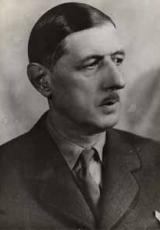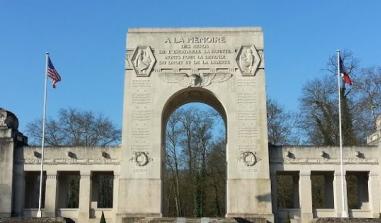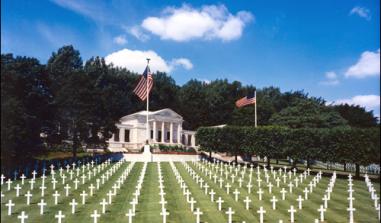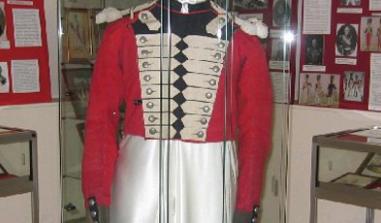Memorial of France Combattante
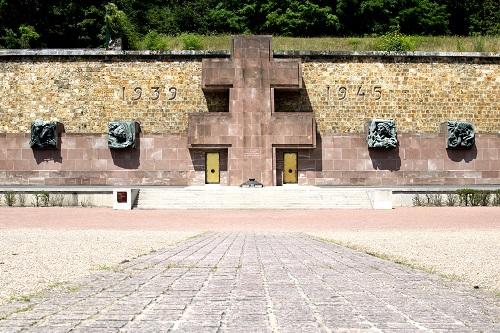
The Mont Valérien monument. Source: MINDEF/SGA/DMPA - Jacques Robert
The memorial, the glade of the shootings, the chapel, the monument of the shootings, the alto-rilievo of Mont Valérien...
- Plaquette à télécharger -
Mont-Valérien was a medieval hermitage and later a popular place of pilgrimage from the 17th to 19th centuries. In the middle of 19th century one of the forts forming part of the Parisian belt was built there. During the Second World War, the site was the German authorities' principal place for executions in France. From 1944 onwards, thanks to support from General de Gaulle and the work of the organisations of the families of those who were shot, it became a memorial site. The Mémorial de la France combattante was built there in 1960 and in 2010 new museum exhibition areas were opened.
Throughout the Second World War, Mont-Valérien was used by the Germans as a place for executing resistance fighters and hostages. The prisoners were shot in a sunken glade. Recent historical research has allowed the identification of more than a thousand of those who were shot.
On the 1st November 1944, General de Gaulle paid tribute to the dead of the Résistance by first of all engaging in private prayer in the glade at Mont-Valérien, before continuing to the fort at Vincennes, another place where shootings were carried out in Paris, and finally to the cemetery in Ivry-sur-Seine, the main burial place of those from the Île-de-France area who were shot. In 1945, Mont-Valérien was chosen by General de Gaulle as the site of the monument to those who died in the 1939-1945 war.
The bodies of fifteen servicemen, symbolising the various forms of combat carried out for the Liberation, were placed in a temporary crypt and joined in 1952 by a sixteenth body representing soldiers in Indochina who fought against the Japanese. A 17th vault was later prepared to receive the remains of the last Companion of the Liberation.
In 1954, an urn containing the ashes of deportees was placed in the crypt. Having become President of the Republic, General de Gaulle decided to create the Mémorial de la France combattante, which was designed by Félix Brunau and inaugurated on the 18th June 1960.
At the beginning of 2000, it was decided to build a monument to those who were shot at Mont-Valérien, which was designed by Pascal Convert. Engraved upon it are all the names of those shot at Mont-Valérien, along with a dedication: "To the resistance fighters and hostages shot at Mont-Valérien by Nazi troops 1940-1944 and to all those who have never been identified".
For a long time Mont-Valérien has remained just as it was, which gives it a great evocative power. Since 2006, the site has been the subject of a special drive by the remembrance, heritage and archives department of the Ministry of Defence to carry out developments to provide the general public with the written resources necessary for an understanding of this important and complex, unrecognised place of national remembrance.
Located on the esplanade of the Mémorial de la France combattante, the information centre allows visitors to consulter biographical papers, as well as digitalised letters, photographs, and archive and Ile-de-France documents about those who were shot, using interactive terminals.
A special area is devoted to the Companions of the Liberation. In addition, there are screens showing archive images of the history of the shootings and about the Mémorial de la France combattante and the ceremonies that have been held there. A permanent exhibition "Résistance and repression 1940-1944" is held in the old stable building. Dedicated to the Résistance, those who were shot and repression in the Ile-de-France area, it helps to put Mont-Valérien in a historical and geographical context.
The exhibition thus retraces the development of the policies of repression and the journey of those who were shot, from their arrest and internment up to their execution. It shows the various places of imprisonment, execution and burial in the Ile-de-France. The central part is more intimate and dedicated to the last letters of those who were shot, the last traces left for their families, which bear witness to the commitment and martyrdom of these men.
Le Mont Valérien
Avenue du Professeur Léon Bernard 92150 Suresnes
Tel.: + 33 (0) 1 47 28 46 35
Email: info@montvalerien.fr
Tours of Mont-Valérien are free and guided; they last an hour and thirty minutes and are at set times, every day except Monday: Low Season*: 10h00, 15h00 High season*: 9h30-11h00, 14h30-16h00 Groups of more than 10 people by appointment only
The reception and information Centre is open every day except Monday, Low season*: 9 am to 12 pm and 1pm to 5 pm High season*: 9 am to 12 pm and 1pm to 6 pm Low season: November-February, July-August High season: March-June, September-October
How to get to the Memorial BY TRAIN: The Paris Saint Lazare to Versailles line to Suresnes station BY RATP: RER line A La Défense or line no. 1 La Défense and then bus no. 360 (Mont Valérien or Hôpital Foch Cluseret stops) BY TRAMWAY: Val de Seine T2 La Défense to Issy-les-Moulineaux - Suresnes: Longchamp Station BY CAR: Porte Maillot - Pont de Suresnes The site is closed to the public on the 1st January, 15th August, 1st November and 25th and 31th December.
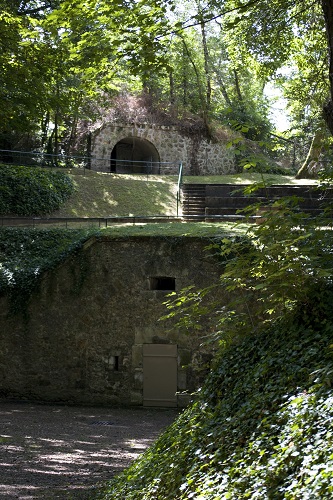
La clairière des fusillés au Mont-Valérien.
Source : Claire CAMERON - SGA/DMPA Le monument aux fusillés du Mont-Valérien.
Source : Jacques ROBERT - SGA/DMPA
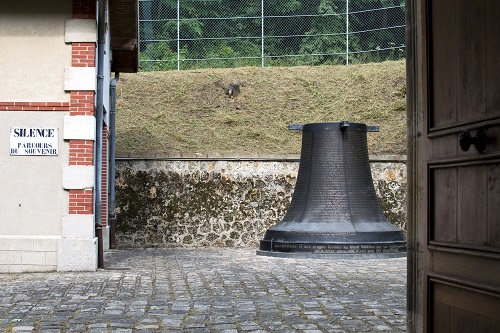
Cloche et Chapelle du Mont-Valérien. © AD Hauts-de-Seine/Vincent Lefebvre
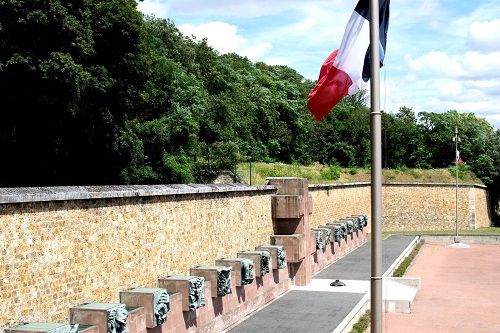
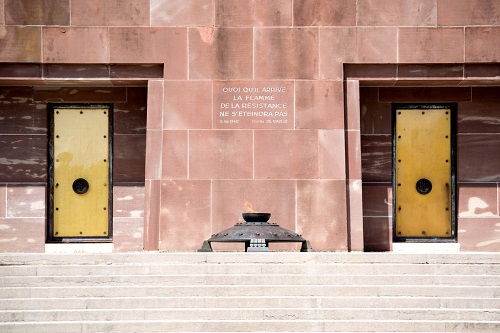
Picture of the multimedia area at the Mont-Valérien information centre .<BR>Source: Rafael FLICHMAN
Practical information
Avenue du Professeur Léon Bernard 92150
Suresnes
01.47.28.46.35
Visites à heure fixe, tous les jours sauf le lundi Basse saison (novembre-février, juillet-août) : 10h00, 15h00 Haute saison (mars-juin, septembre-octobre) : 9h30, 11h00, 14h30, 16h00
Le site est fermé au public le 1er janvier, le 1er mai, le 15 août, le 1er novembre, les 25 et 31 décembre.


